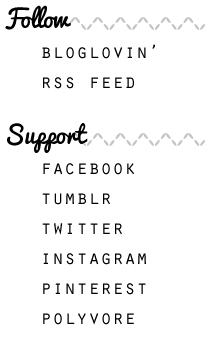“Is THIS Plus Size Vintage?” When you haven’t worked in the fashion industry and/or had history of fashion and textile classes, it can sometimes be a lot harder to figure out what is vintage and what isn’t (especially for a plus size gal!) when thrifting. Here are a few tips I have come up with to make thrifting for plus size vintage easier!
First off, thrifting for plus size fashion is a lot different than thrifting for “regular” sized vintage. The main reason is that it wasn’t until the late 1980’s-1990’s when plus size clothing with style became popular. Most of the time before this, people wore muumuus. If you find something above a 18/20 from the 1960’s or 1970’s, you’ve hit the jack pot!
But, what is “vintage?” “Vintage” means different things to different people. If you are selling on Etsy like I do, then they consider anything made in 1993 or older (for clothing) to be “vintage.” This is, basically, terminology used for a clothing item that is newer than an “antique” item.
Here are a few clues to look for:
1. Sizing: Sizing didn’t get standardized until more recently. In older items you will see a lot of “1/2″ sizes (i.e. “18 1/2″ or “24 1/2″).
2. “Union Made” Clothing: Garment unions haven’t been prevalent in the garment industry for a long time, so this is a sign that the item is probably vintage.
3. Made in USA: It is very rare for more modern clothing to be “Made in USA.” Most clothing productions has been shipped over seas. If you see this, on a clothing’s labels, than more than likely it is an older item.
4. Silhouette: Certain silhouettes are stereotypical for certain decades. The silhouette coupled with other clues I have mentioned, can point a garment to being from a certain decade. A quick guide to 20th century fashion silhouettes:
 |
| Silhouettes of the 20th Century (Picture Source) |
5. Prints or Patterns: Like silhouette, certain prints or patterns on a fabric can be popular from a certain decade. Samples of prints from different decades:
6. Fabrication: Polyester first became very prevalent in the 1960’s and 1970’s. It was a more heavy weight, unbreathable version than today’s polyester.
Also, it didn’t become standard to label fabric content and care until the 1960’s when a law was passed requiring manufacturers to include this in a garment.
7. RN Numbers: RN numbers are a US government issued number that (by law) has to appear on all clothing that is sold. If you want to get really precise about finding out when a garment was made, you can calculate an age of a garment using the following method:
You will need an RN number from a new garment and the RN number of your vintage piece. Use the following calculation to find out the year your garment was made.***
New Garment RN – Vintage Garment RN / 2635 (Average # of RN’s issued each year)= # YEARS SINCE GARMENT WAS MADE
Current Year – Above Number = Year Garment Was Made
For Example:

Keep in Mind…
It takes time and practice to get an “eye” for figuring out if something is vintage. You will probably make some mistakes (it’s easy to do!). Be patient, visit MANY thrift stores, and go through as many clothing racks as possible! The perfect piece could be one in a million, but when you find that special one, there’s no looking back!
*** Equation Source








